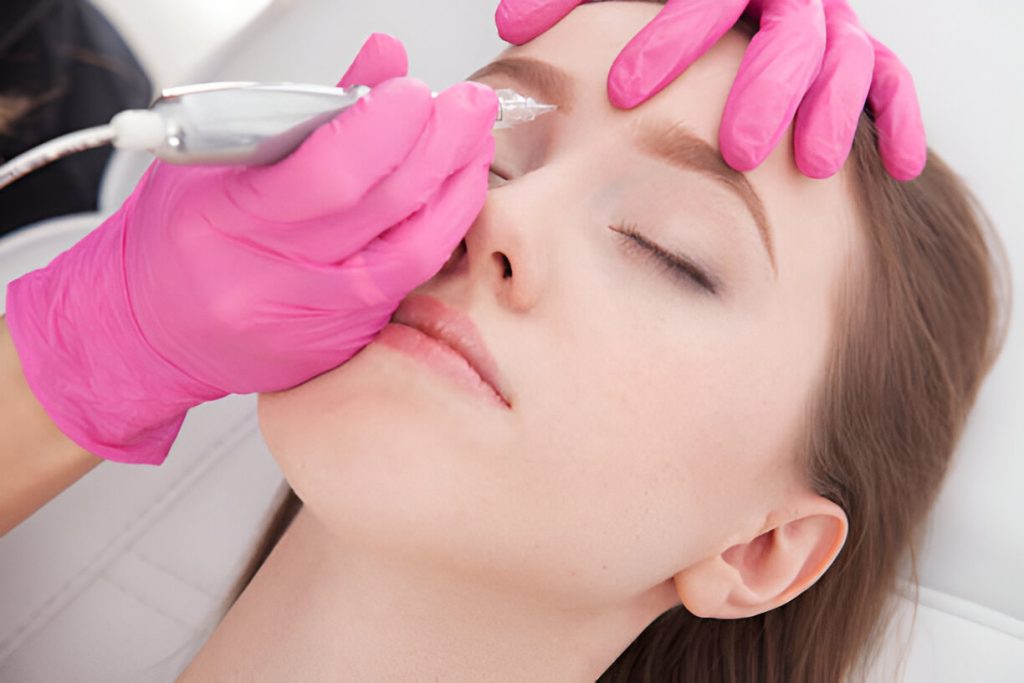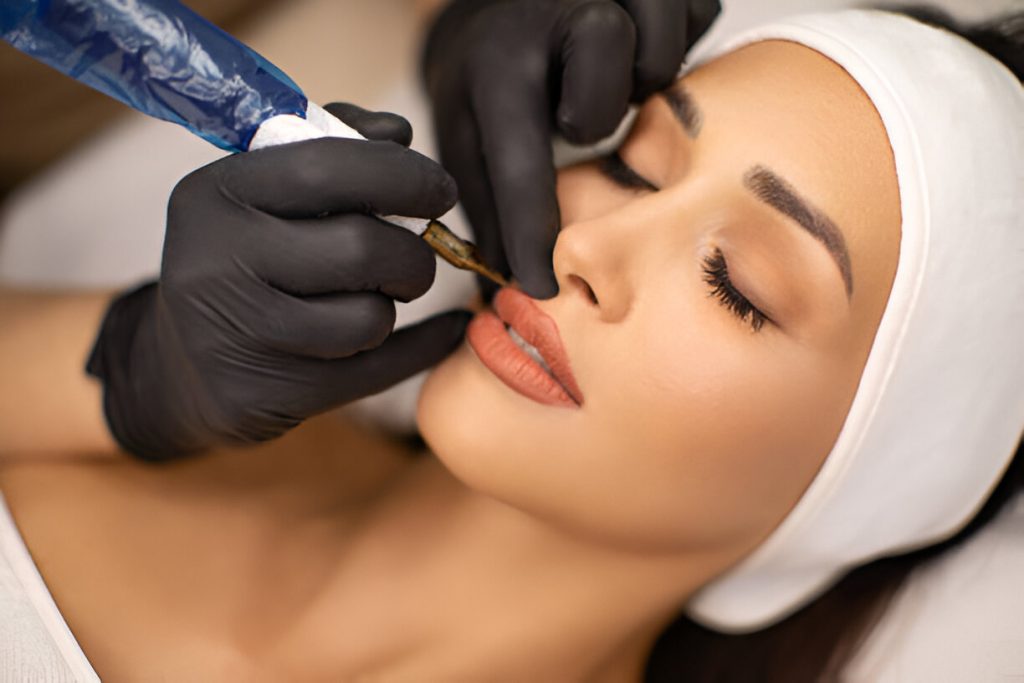Everything About Semi Permanent Makeup
Semi permanent makeup is one of those overnight sensations, which have finally made people aware of its convenience and efficacy in the quest for greater beauty with minimum effort every day. Applications range from brow shaping and eyeliner to lip tinting, achieved by various methods involving microblading and micropigmentation. So, what is semi-permanent makeup, and how does it work? Here is the detailed explanation one needs for semi-permanent makeup.
What is Semi Permanent Makeup?
Semi permanent makeup describes a number of cosmetic procedures involving pigment that aims at reshaping or highlighting facial features. Unlike traditional makeup, which one has to put on every day, semi-permanent makeup has been devised in such a way that it remains on the skin for quite a long period of time, thus providing a long-term solution. These treatments are less invasive compared to traditional tattooing but will yield long-lasting results.
The term “semi-permanent” infers that while the makeup is longer-lasting than regular cosmetics, by no means is it permanent. Over time, the pigments will slowly fade due to skin cell turnover and overexposure to the elements.

Microblading
Microblading is a common semi permanent makeup technique used only to enhance eyebrows. In this technique, the professional uses a fine blade to incise very tiny hair-like strokes in the skin. The pigment is deposited into these incisions and gives the appearance of natural hair.
How It Works:
In the microblading procedure, a technician employs a hand-held instrument equipped with a row of delicate needles arranged like a blade. The small blade makes tiny cuts through the outer layer of skin. A pigment is applied directly into the cuts. Typically, the whole treatment is divided into two steps: one for the initial application and another for the touch-up session.
Longevity:
Results normally last from one to three years, depending on skin type, lifestyle, and aftercare. This will contribute to the longevity or deterioration process. Touch-ups are necessary to keep a perfect look and to keep your eyebrows full and natural.
Micropigmentation
Micropigmentation is only a generic term for permanent makeup. It can be used in a wide range of applications, from brow shading to eyeliner to lip tinting, by simply implanting pigment into the skin using any machine.
How It Works:
Micropigmentation includes taking a machine with a needle and depositing the pigment into the skin, at the dermal layer. The needle is moving up and down to puncture the skin and implant the pigment inside. Further spreading of the pigment in the skin then takes place to result in the desired outcome. This is less traumatic in comparison to microblading and can sometimes create more uniformity and definition.
Longevity:
The effects of micro-pigmentation can last anywhere between 2 to 5 years. As with microblading, it will continue depending upon your skin type, sun exposure, and aftercare.

How Does Semi Permanent Makeup Work?
The semi-permanent makeup process involves many key steps:
Consultation and Design:
A qualified technician will consult with you to discuss the look you want to achieve and check your skin type. The technician will then design the shape and color of the makeup to highlight your features.
It involves preparing the skin by cleaning it and, sometimes, a topical anesthetic cream is used to help reduce discomfort. In the case of microblading, skin marking is done in order to outline the shape desired for the eyebrows.
Application:
Depending on the technique chosen—microblading or micropigmentation—the technician will apply the pigment. In microblading, the technician makes fine, hair-like strokes, while in micropigmentation, a machine deposits pigment into the skin.
Healing:
Once the procedure is performed, the treated area will undergo the healing process, which includes some minor swelling and redness that should disappear in a few days. The pigment may look darker at first, but it will lighten as the skin heals and the pigment settles.
Aftercare:
The aftercare is very crucial to achieve the best outcome. This includes but is not limited to avoiding direct sunlight, not picking the scabs, and using specific ointments according to instructions. The technician will go over certain aftercare instructions based on the procedure he or she has performed.
How Long Does Semi Permanent Makeup Last?
Longevity will vary depending on the technique used, your skin type, and even your lifestyle. Commonly, semi-permanent makeup can last anywhere from a year up to five years. Here’s what generally you can expect from different types of semi-permanent makeup:
Microblading:
It lasts anywhere between 1 and 3 years. Those with oily skin or those who exfoliate the area of the eyebrows more frequently may need a touch-up much sooner.
Micropigmentation:
Generally, the procedure may last anywhere from 2 to 5 years. How long it lasts may be related to the colour of pigment used, depth of pigment implantation, and patient post-care compliance.
Where can I find assistance for Semi Permanent makeup?
Semi permanent makeup is convenient for improving one’s appearance effectively and for a long period. These include microblading and micro pigmentation techniques, which are options for people who want to have simpler beauty routines but with all the benefits of well-defined eyebrows, eyeliner, or lip color. Knowing how these techniques work and how long each technique lasts will also help an individual make an informed decision on whether or not to adopt semi-permanent makeup as part of one’s beauty regimen.
You can enjoy the results of Semi-permanent makeup, provided you select a good cosmetic clinic, Karishma Cosmetic Clinic, follow proper care after the process, and maintain an overall healthy lifestyle.
Semi-permanent makeup, if well cared for and touched up periodically, is long-lasting, accentuates natural features, and simplifies one’s daily beauty routine.
Book your consultation today.
FAQ's On Semi Permanent Makeup
The price of semi-permanent makeup depends on several factors including the area treated (eyebrows, lips, eyeliner), the technique used, and the reputation of the clinic or practitioner. Multiple sessions may be required for best results.
Yes, semi-permanent makeup is generally safe when performed by a trained professional using sterile equipment and high-quality pigments. However, there’s a small risk of allergic reactions, infections, or undesired results, so proper research and aftercare are essential.
People with active skin infections, eczema, psoriasis, or keloid scarring should avoid permanent makeup. It’s also not ideal for pregnant women, individuals with blood disorders, or those allergic to pigments or anesthetics used during the procedure.
There is no strict age limit for semi-permanent makeup. However, clients must be at least 18 years old. Older individuals can also benefit, provided their skin is healthy enough for the procedure and healing process.
Permanent makeup causes minimal pain, often compared to light scratching or tweezing. Most procedures use numbing creams to reduce discomfort. Pain levels vary by area treated and individual sensitivity, but it’s generally well-tolerated and manageable.
Semi-permanent make-up can enhance eyebrows, define eyes with eyeliner, and add color to lips. It can also camouflage scars, correct asymmetry, and recreate areolas after surgery, offering long-lasting cosmetic improvements with minimal downtime.
Recovery time for semi-permanent makeup typically ranges from 7 to 14 days for the skin to heal. Full results may take up to 4 to 6 weeks as the pigment settles and any necessary touch-ups are completed.
Yes, a patch test is usually recommended before cosmetic procedures involving chemicals or pigments. It helps identify any allergic reactions or sensitivities, ensuring your safety and minimizing risks during the actual treatment. Always consult your specialist beforehand.
Permanent makeup uses tattooing techniques to embed pigment deep into the skin, lasting for years. Semi permanent makeup places pigment closer to the skin’s surface, typically fading within 1–3 years, allowing more flexibility for updates or style changes.
Semi-permanent makeup does fade over time due to skin regeneration, sun exposure, and lifestyle factors. While it may not disappear entirely, it typically fades significantly, requiring touch-ups or refresh sessions to maintain the desired look.
Semi permanent makeup offers long-lasting enhancement of facial features like eyebrows, lips, and eyeliner. It saves time on daily makeup routines, provides a consistently polished look, and boosts confidence by correcting asymmetry or enhancing natural beauty with minimal maintenance.
Individuals with skin conditions like eczema, psoriasis, or active acne near the treatment area should avoid semi-permanent makeup. Pregnant or breastfeeding women and those with bleeding disorders or severe allergies should also consult a doctor before considering the procedure.
Yes, semi permanent makeup can be removed using laser treatments, saline removal, or chemical solutions. The success depends on the pigment type, depth, and skin condition. Multiple sessions may be needed for effective and safe removal.



